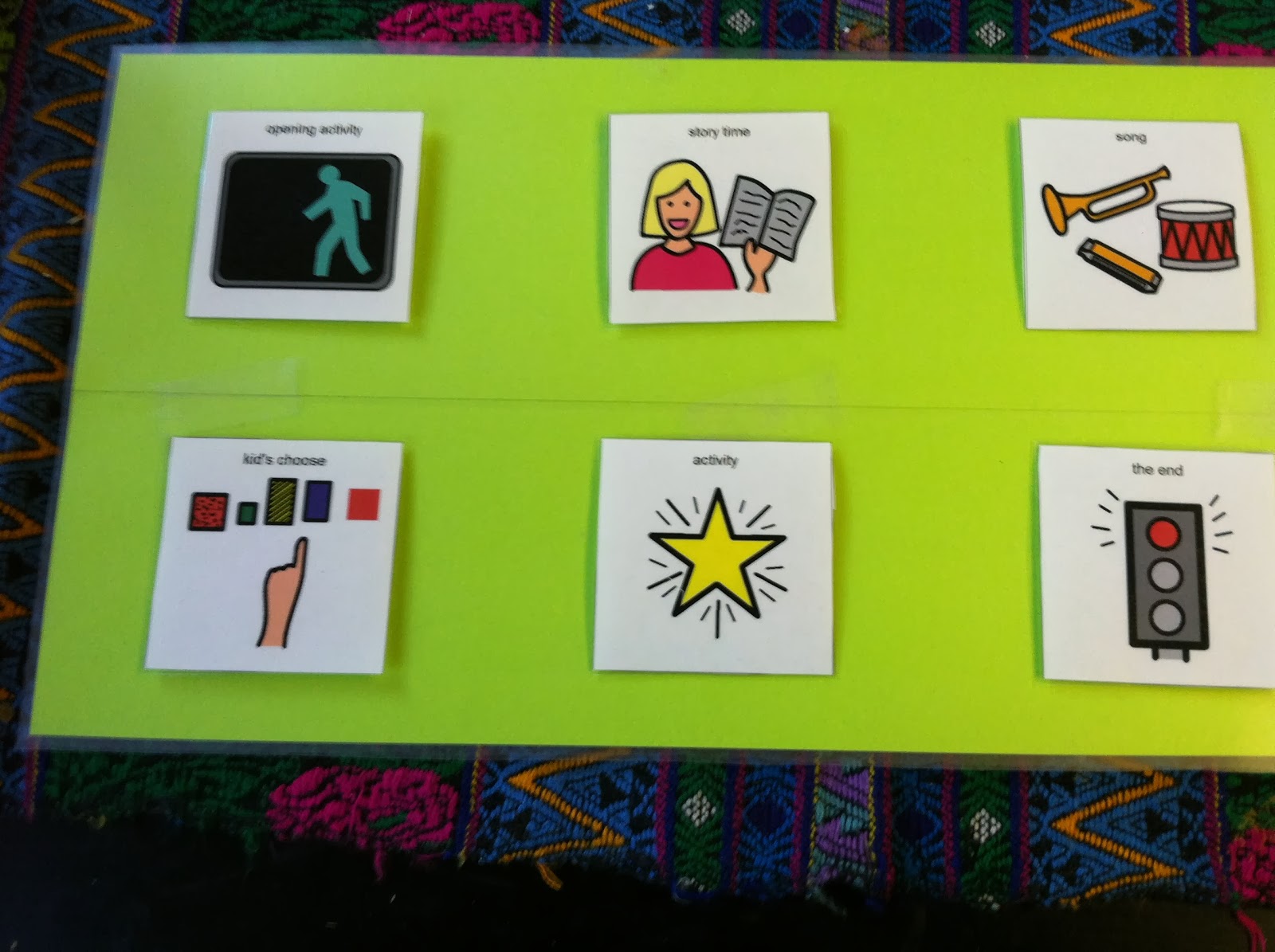Tip # 1 - Create a circle time routine and use visuals to support your routine- What is a routine? A routine means that your circle has the same basic components each time. For example, music, a gross motor activity or game, and a story or finger play. This helps young children to know what to expect and follow along.
A visual schedule like the one below helps children follow a new or different routine.
Circle Visual
Tip # 2- The length of your circle and activities that you choose should be developmentally appropriate. A group of young 3's will attend for about 10 minutes, if the activities are really engaging. If you are attempting 20 minute circle times, you are setting yourself up for very challenging circle times.
When choosing books, fewer words and larger pictures are a good rule of thumb. (All the children need to be able to see the pictures) Fewer words are best for those children who are still working on attending skills.
Tip # 3- Know your students and plan accordingly. Are your student really active? Do you have a lot who love music? Enjoy silly books? Love games? You want to tailor your circle activities so that they target the interests of the kids you are working with. More engagement = minimal behaviors.
Tip # 4- Incorporate expectations into circle time- What do you expect your preschoolers to do during circle time? Do you want them to sit criss-cross and keep their hands in their laps? If so, review the rules each circle until you feel confident that they have it down. Post a visual reminder.
Tip # 5- Balance quiet and active activities at every circle- All children need to get up and move. Balancing active activities (games, music, and dance) with quiet activities can help children remain engaged for longer periods of time.
Tip # 6- Defined seating areas- Poly spots, shape sitters, and circle time rugs are all great examples of defined seating areas. Each child has a defined space (a personal bubble) that isn't too close to other children. This can prevent bumping, poking, and side talking.
Tip # 7- Involve the children- The children need to be active participants in circle activities. Give them jobs, the opportunity to sing or say a repeating line in a song/story, opportunities to play, and be active during circle.
Specific Inclusive Strategies
- For wiggly kiddos
- Seating: Allowing seating with a little wiggle can be helpful for some kids (Disco sits, bean bag chairs, small yoga balls)
- Fidgets: Small, quiet handheld objects that a child can hold during circle. (Stress balls, koosh balls, hairy tangles, and sensory bags)
- Giving the child a job: The child would have a piece of the flannel board story, or be the calendar helper
- For non-verbal children
- Talk blocks: http://www.mayer-johnson.com/talk-block-set-of-5/. Talk blocks allow teachers to record words or phrases so that children can participate or make a request by pushing the button.
- Choice boards
3. Visuals- Alert children to the activities that are coming next in the routine.
Need more strategies? Comment or email me at jstepken@milestonesearlychildhood.com

